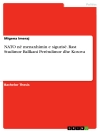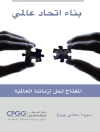Labour leader Harold Wilson was once asked how difficult he found being prime minister of the United Kingdom. ‘Not half as difficult as being Leader of the Opposition’, he replied. Sadly for the Labour Party, much of the last century has been spent in shadow government. But were these wasted years in the Party’s history? Or did they offer vital opportunities for creation and improvement?
In Keeping the Red Flag Flying political historians Mark Garnett, Gavin Hyman and Richard Johnson offer the first in-depth account of Labour’s periods out of office since becoming the Official Opposition in 1922. They argue that, far from being barren periods in the Party’s history, Labour’s opposition years from Mac Donald to Starmer have been undervalued and misunderstood. Across the book’s eight chapters they scrutinise Labour’s approach to reforming the party machinery, its development of policy proposals, its success in appealing to the wider electorate and its skill in opposing the government to identify the key hallmarks of successful opposition, as well as common mistakes. As the Labour Party prepares for a long-awaited return to government, this insightful book on Labour’s past has vital lessons for the Party’s future.
Table of Content
List of Figures and Tables
Preface and Acknowledgements
Introduction
Chapter 1: In Pursuit of an ‘Insane Miracle’ (1922-29)
Chapter 2: A Battle Over Peace (1931-1940)
Chapter 3: In Opposition to the Wartime Government (1940-45)
Chapter 4: ‘Fight, Fight, and Fight Again’ (1951-1964)
Chapter 5: Yesterday’s Men (1970-74)
Chapter 6: Impossible Promises and Far-Fetched Resolutions (1979-1987)
Chapter 7: Thatcher’s Greatest Achievement? (1987-97)
Chapter 8: In New Labour’s Shadow (2010-2024)
Conclusion
Bibliography
Notes
About the author
Mark Garnett is Senior Lecturer in the Department of Politics, Philosophy and Religion at Lancaster University.
Gavin Hyman is Senior Lecturer in the Department of Politics, Philosophy and Religion at Lancaster University.
Richard Johnson is Senior Lecturer in the School of Politics and International Relations at Queen Mary, University of London.












